Cassini’s Greatest Hits: The Spacecraft’s Best Images of Saturn
A Growing Shadow
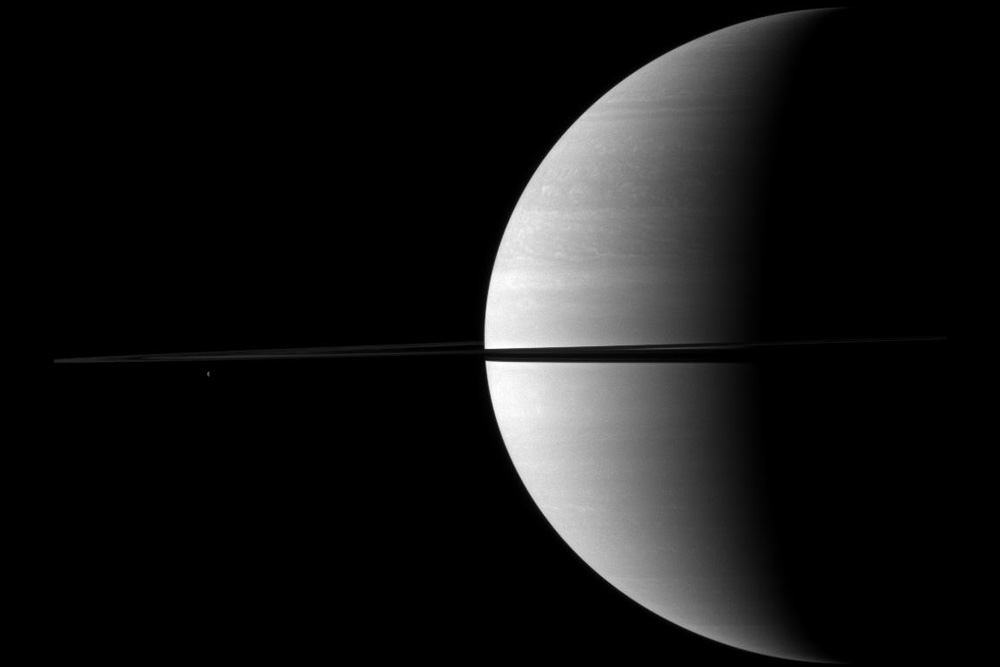
The shadow of Saturn's rings is extremely thin in this image from Cassini. The picture was taken with the spacecraft's wide-angle camera on Nov. 28, 2009, not long after the planet's August 2009 equinox. The image was taken using a filter that's sensitive to near-infrared light. Saturn's moon Tethys is the small dot on the left of the image, below the rings.
Rhea and Dione

Two tiny moons, Rhea and Dione, pose with Saturn in this image from Cassini, taken on March 11, 2011. Rhea (on the right) and Dione are the second- and fourth-largest moons of Saturn, respectively, but they are dwarfed by their parent planet, which is sliced horizontally in this image by the ring system. The shadow of the moon Tethys is also visible closer to the bottom of the planet.
Looking South
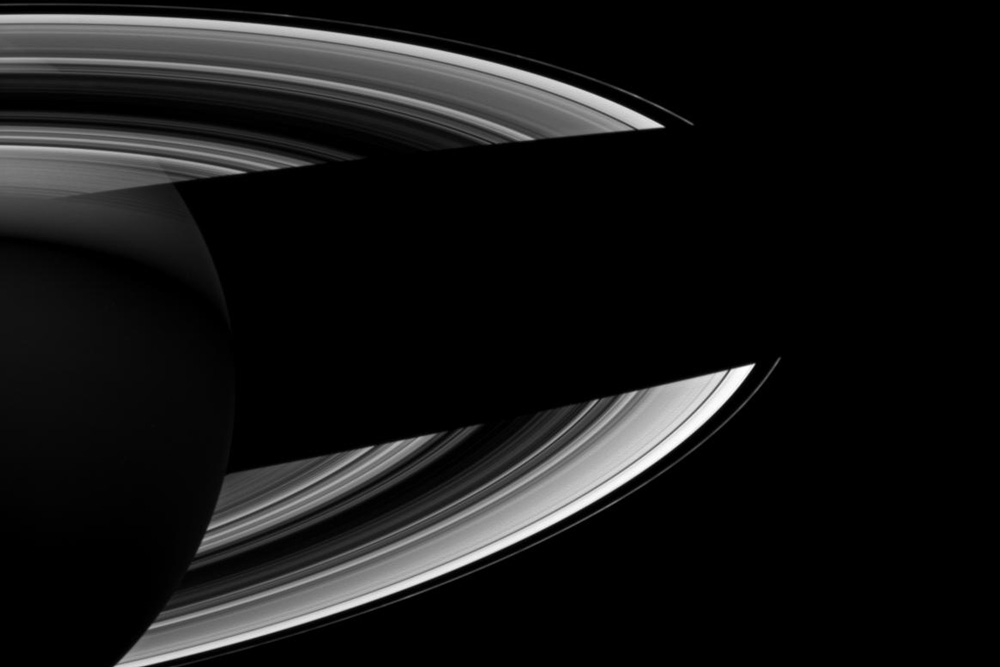
This image shows another uncommon view of Saturn — looking up at the nightside of the southern hemisphere, which casts a shadow across the full width of the ring system. The image was taken in visible light with the Cassini spacecraft's wide-angle camera on June 24, 2012.
The moon Epimetheus can be seen near the top left of the image; the moon Janus is a small white dot in the bottom left of the image.
Stripes and Stripes
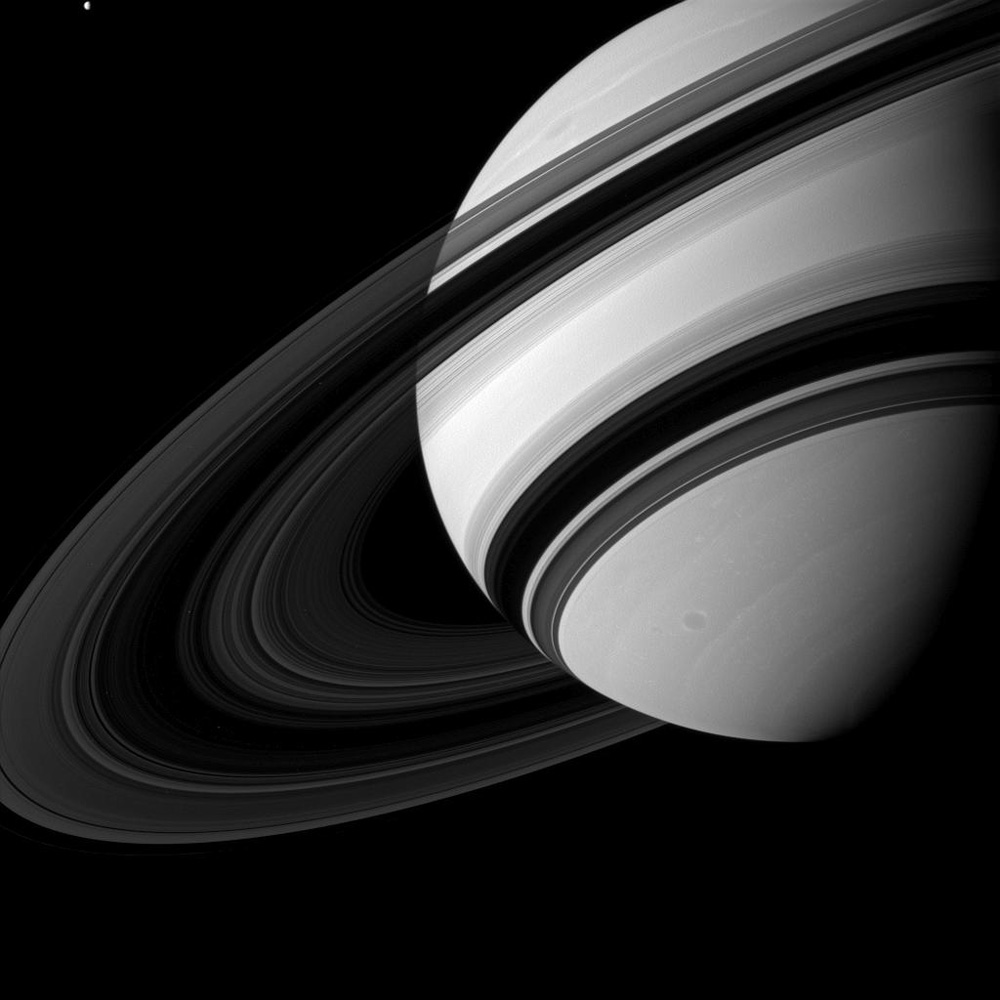
The moon Tethys, near the top of this image, is dwarfed by mighty Saturn and its rings. Tethys is about 660 miles (1,062 km) across — significantly smaller than the width of the rings — but scientists believe the moon is many times more massive than all the material in the entire ring system combined. This image was taken Aug. 19, 2012.
Beside a Giant
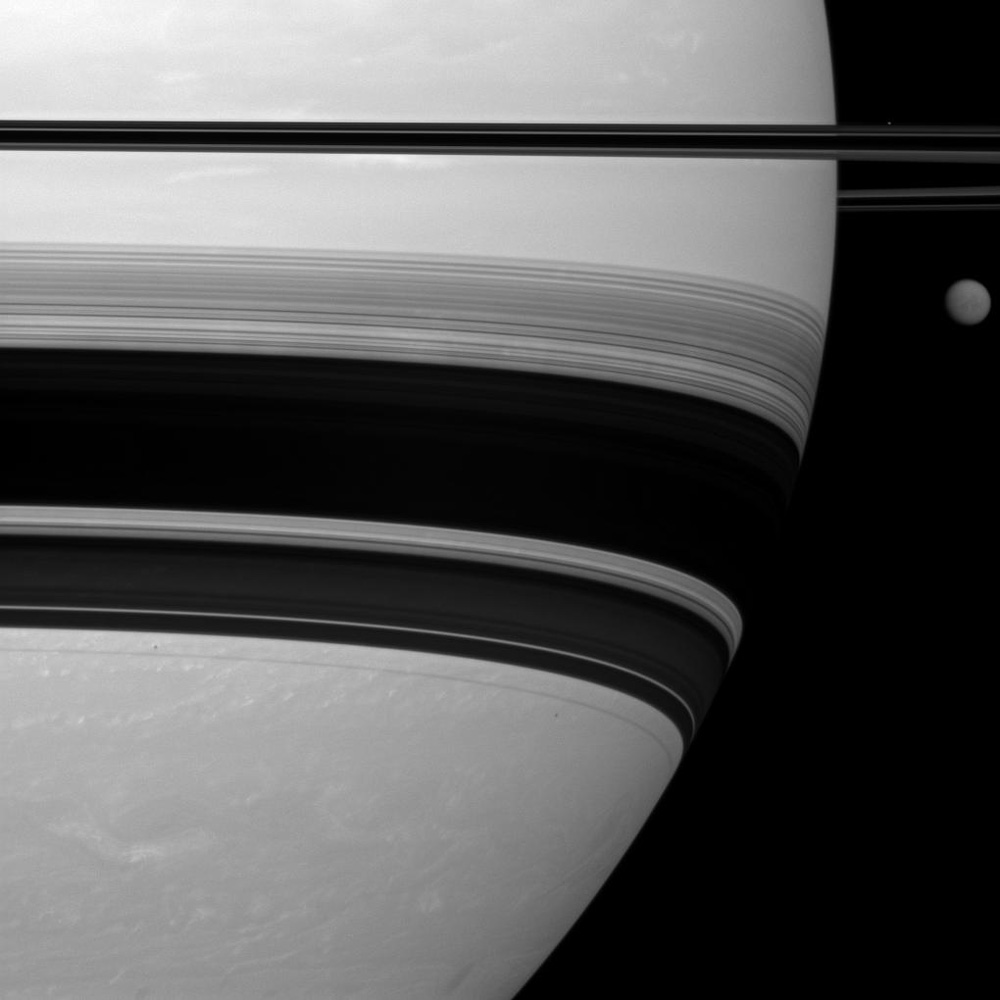
Saturn's largest moon, Titan (upper right), is about 3,200 miles (5,150 km) across, but it looks pea-size compared to Saturn. The moon Prometheus, which is only 53 miles (86 km) wide, can be seen above the rings, in the upper right of the image, which was taken with Cassini's wide-angle camera on Jan. 5, 2012.
Infrared Eyes
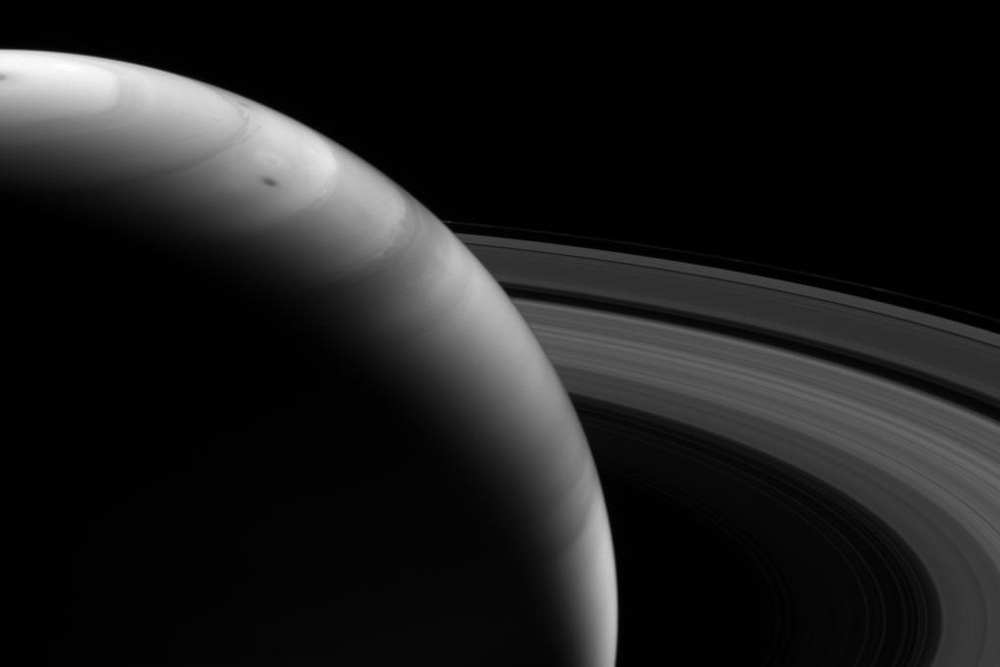
Cassini took this image of Saturn in infrared light, which can reveal structures and textures in the planet's clouds that can't be seen in visible light. In this image, the contrasting colors in the clouds appear smudged, like a watercolor painting. Here, the spacecraft looks toward the sunlit side of the planet on Aug. 12, 2013.
Northern Summer
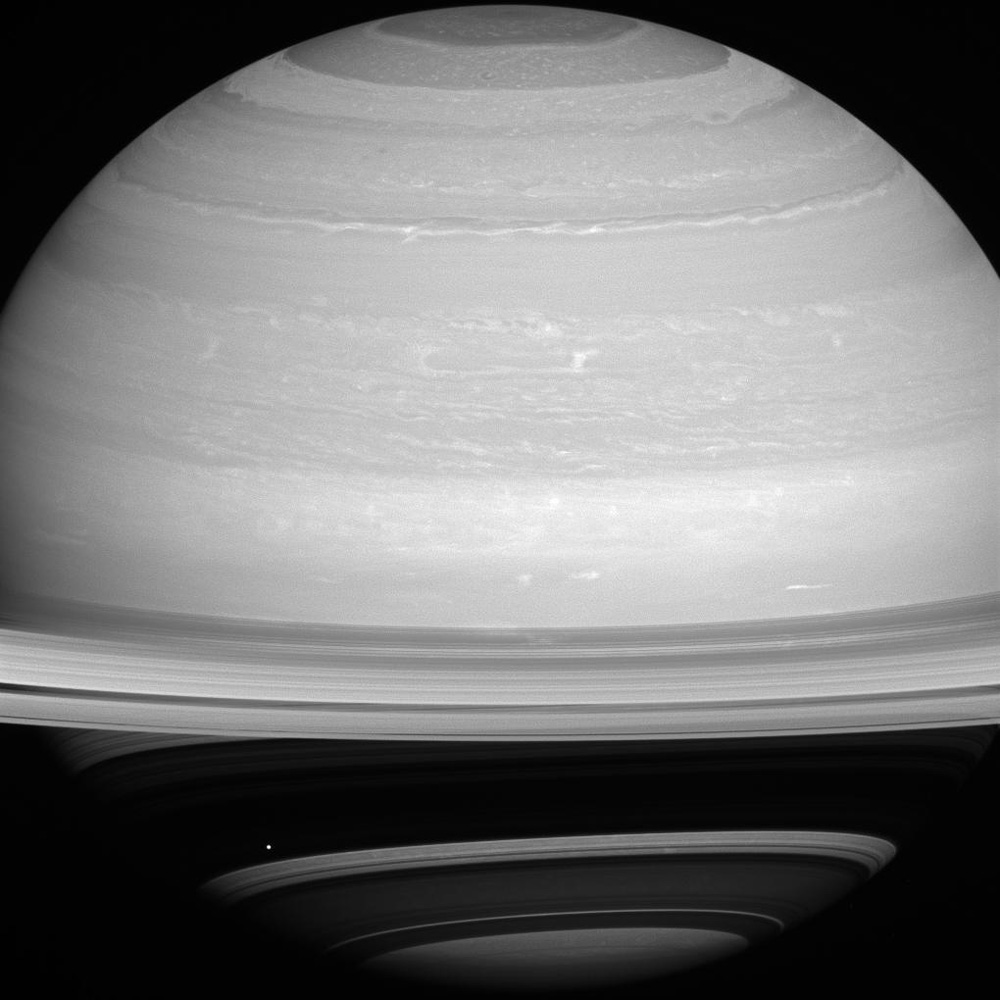
In this image from Cassini, the northern hemisphere of Saturn can be seen clearly, but the southern hemisphere is mostly cloaked in the shadow of the ring system. The bright moon Mimas is positioned in front of the rings' shadow.
This image was taken July 13, 2014, as the Saturn system neared summer in the northern hemisphere. As the seasons change, so does the size of the shadow cast by the ring system.
Get the Space.com Newsletter
Breaking space news, the latest updates on rocket launches, skywatching events and more!
In the North
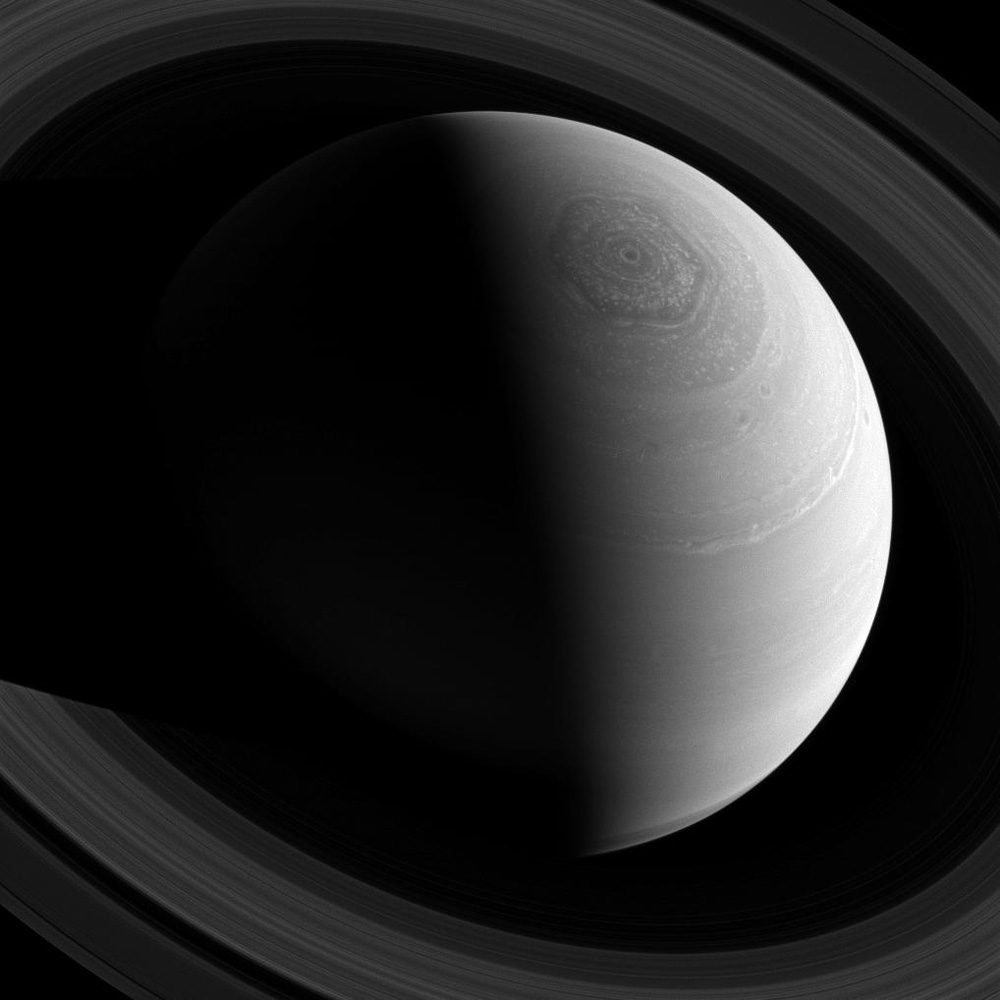
This view of Saturn's northern hemisphere provides a glimpse of the split between night and day on the planet, as well as a view of the hexagonal storm that has been swirling around the planet's north pole for more than 30 years. The image was taken with Cassini's wide-angle camera on Nov. 23, 2013.
Saturn's Crescent
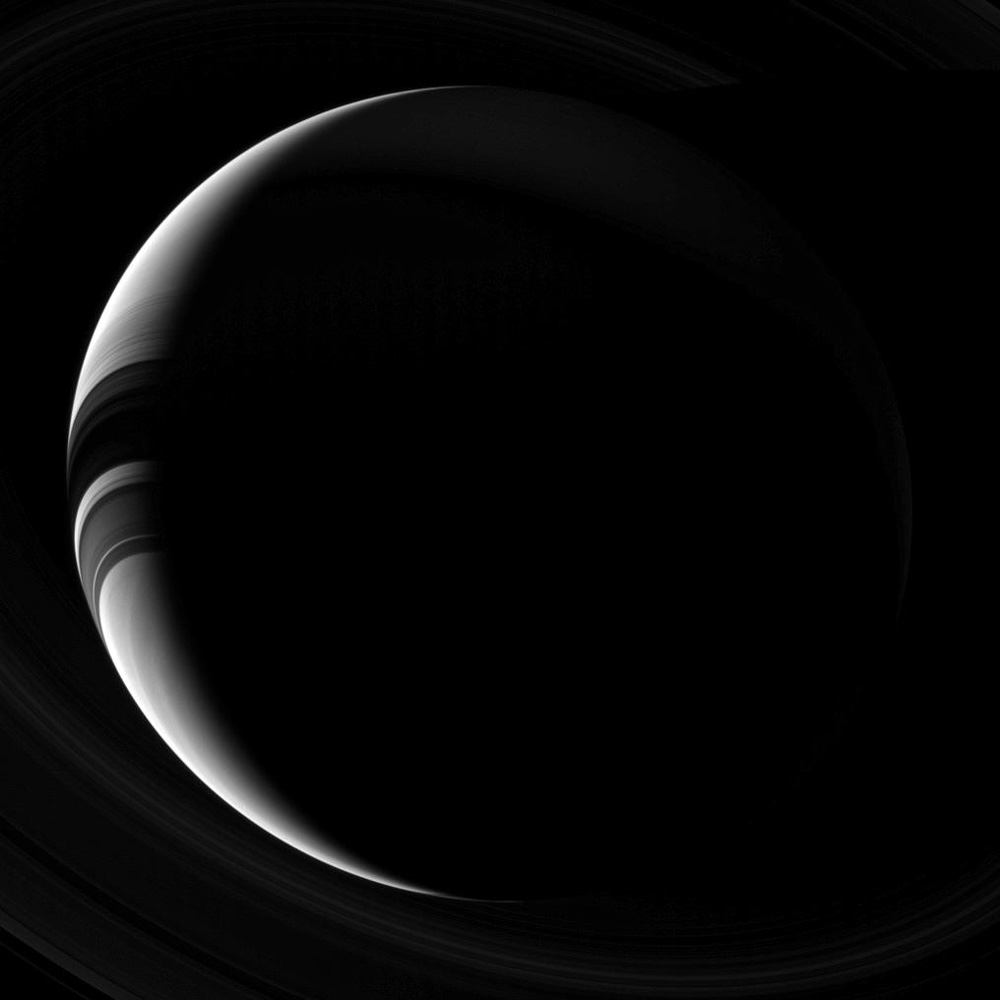
While Saturn dominates most images taken by Cassini, this view of the planet's nightside includes only a sliver of illumination. The image was taken Sept. 20, 2013.
The Nightside
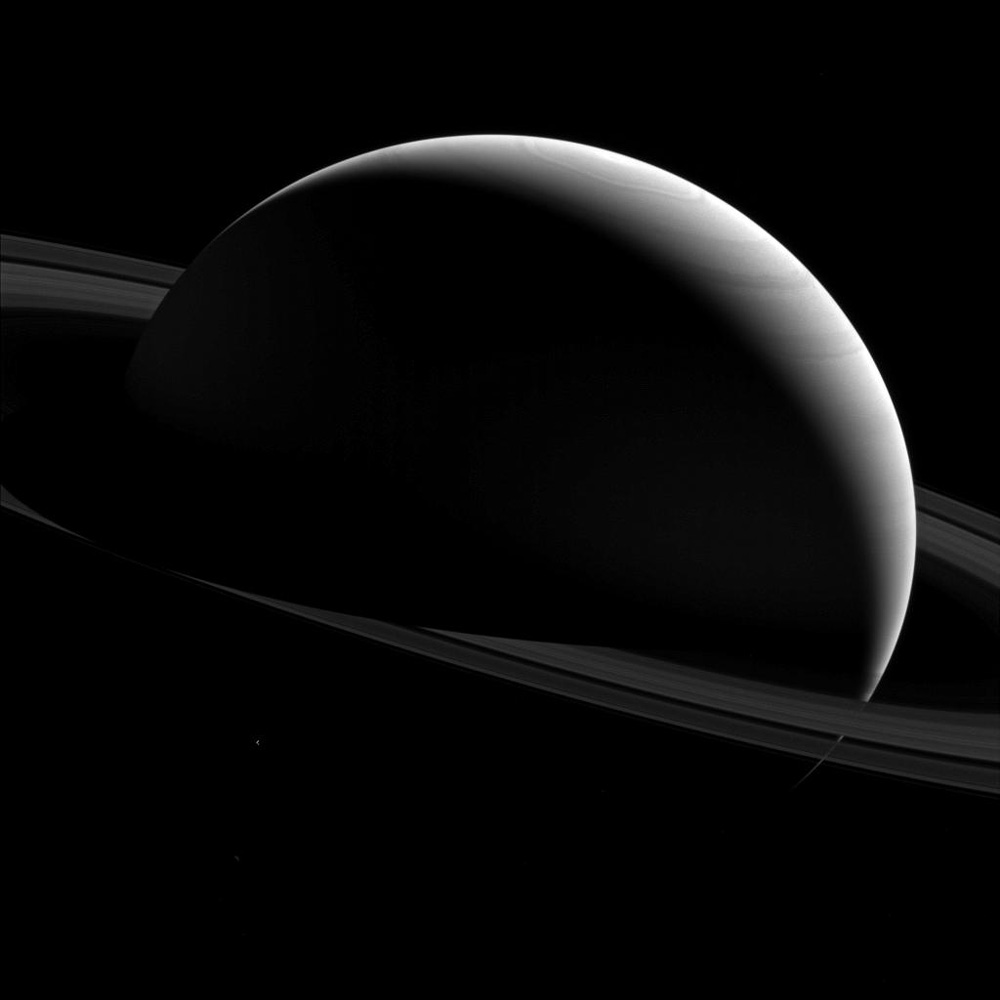
This image shows another view of Saturn's nightside, captured by Cassini on Jan. 15, 2015. A planet's atmosphere can scatter light to the nightside, but out in space, shadows can appear pitch-black, as illustrated by Saturn's shadow cast onto the rings in this image. The wavy outline of the hexagonal storm in Saturn's northern hemisphere is visible.
Join our Space Forums to keep talking space on the latest missions, night sky and more! And if you have a news tip, correction or comment, let us know at: community@space.com.

Calla Cofield joined Space.com's crew in October 2014. She enjoys writing about black holes, exploding stars, ripples in space-time, science in comic books, and all the mysteries of the cosmos. Prior to joining Space.com Calla worked as a freelance writer, with her work appearing in APS News, Symmetry magazine, Scientific American, Nature News, Physics World, and others. From 2010 to 2014 she was a producer for The Physics Central Podcast. Previously, Calla worked at the American Museum of Natural History in New York City (hands down the best office building ever) and SLAC National Accelerator Laboratory in California. Calla studied physics at the University of Massachusetts, Amherst and is originally from Sandy, Utah. In 2018, Calla left Space.com to join NASA's Jet Propulsion Laboratory media team where she oversees astronomy, physics, exoplanets and the Cold Atom Lab mission. She has been underground at three of the largest particle accelerators in the world and would really like to know what the heck dark matter is. Contact Calla via: E-Mail – Twitter









